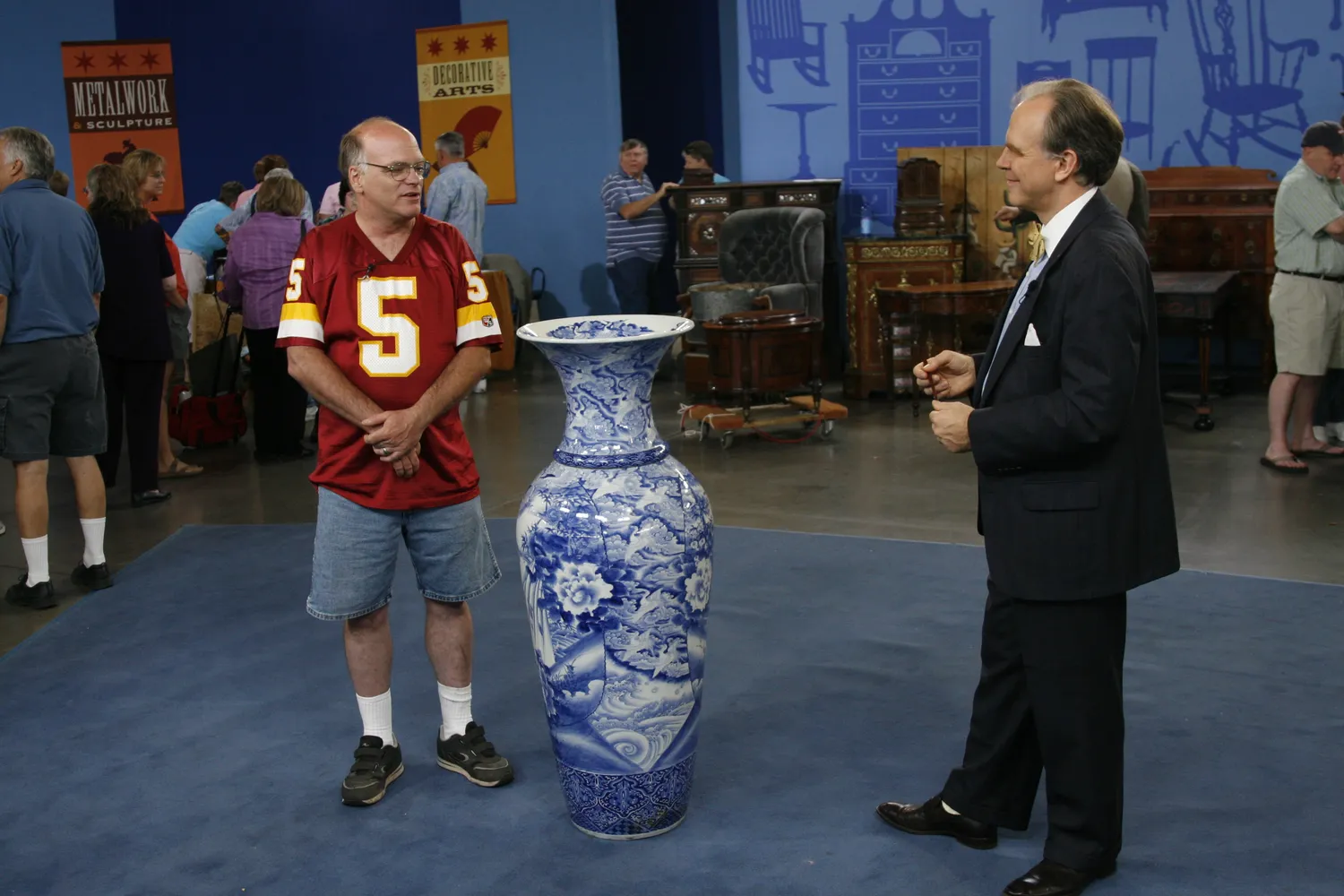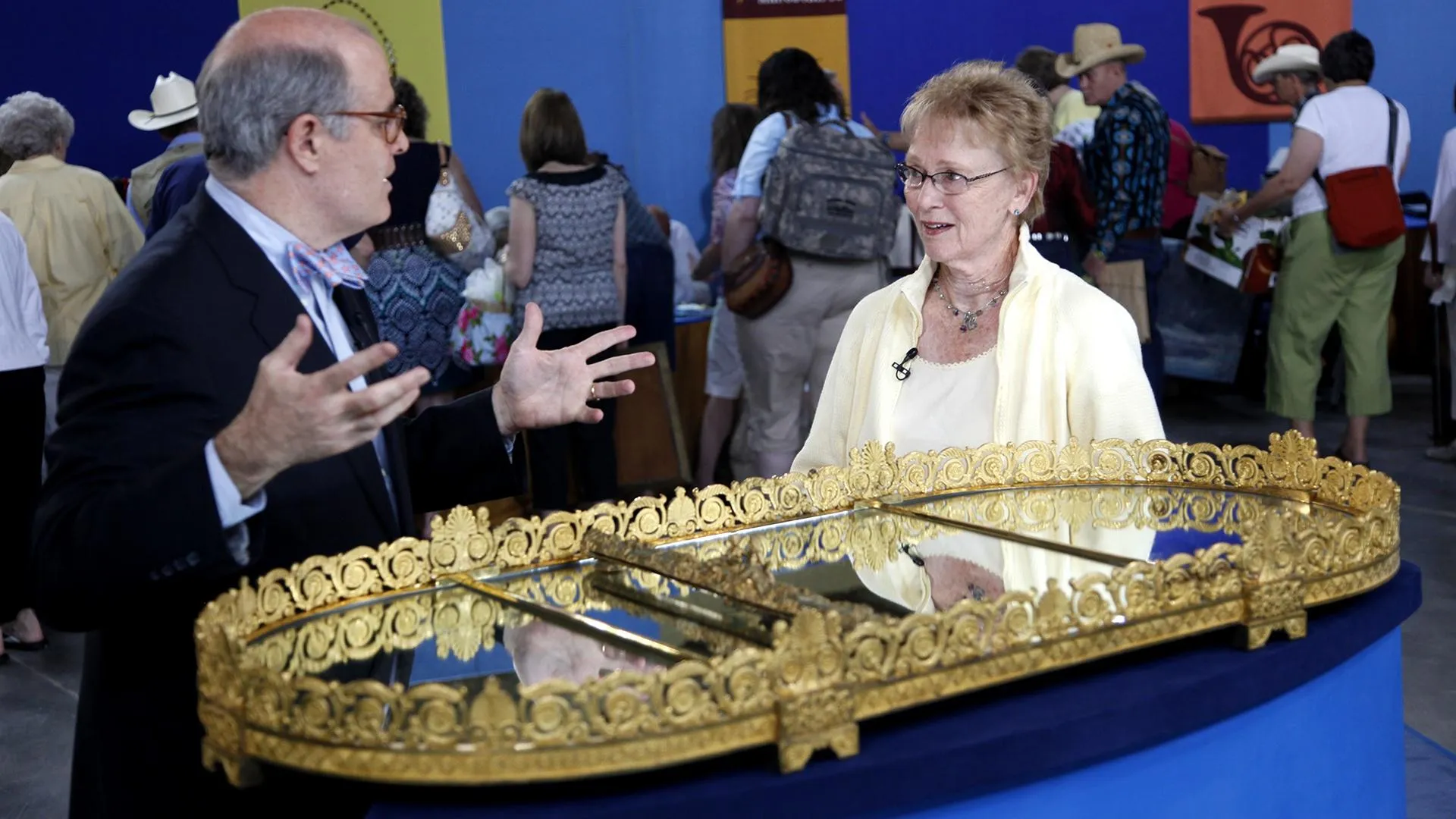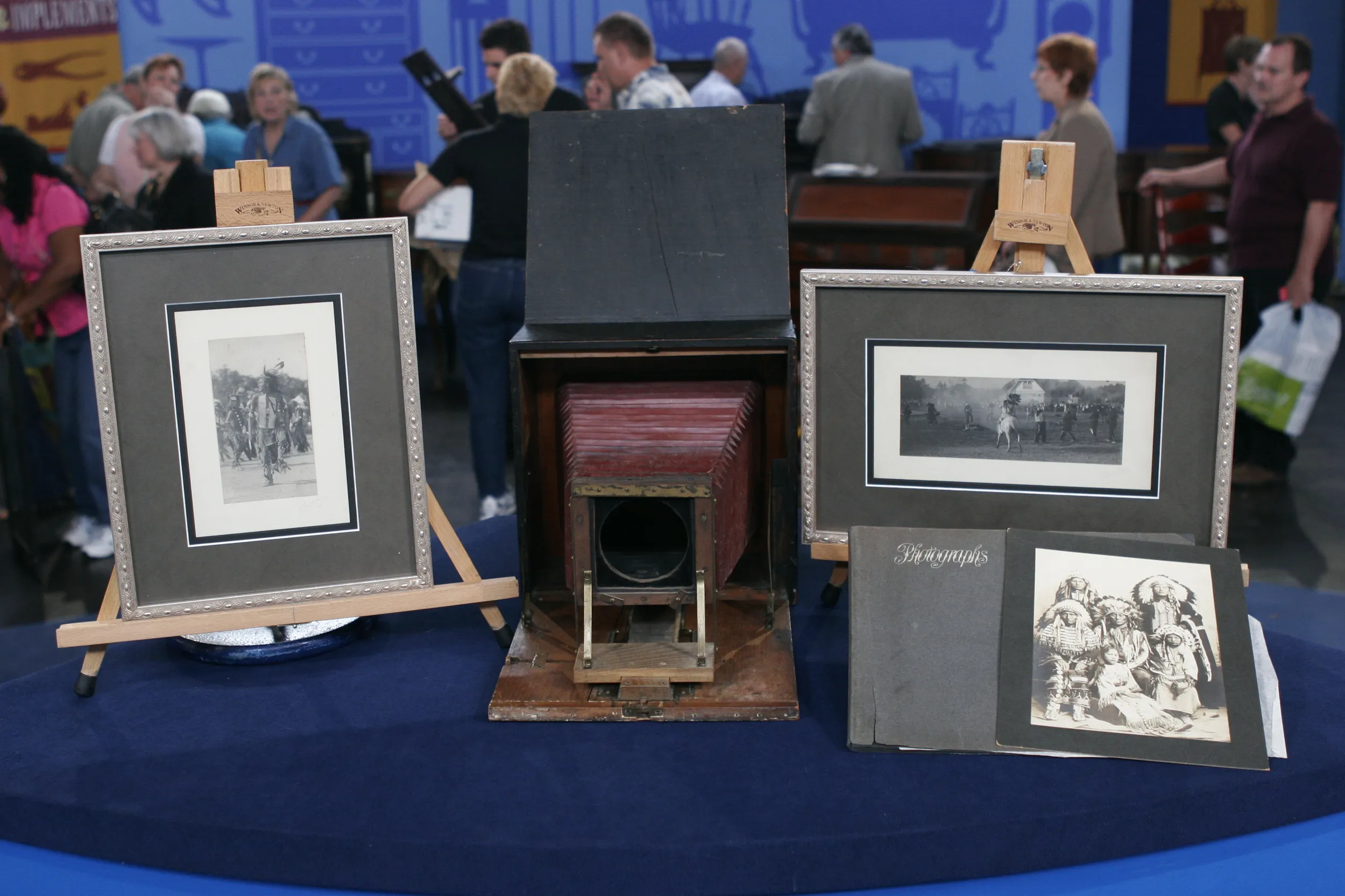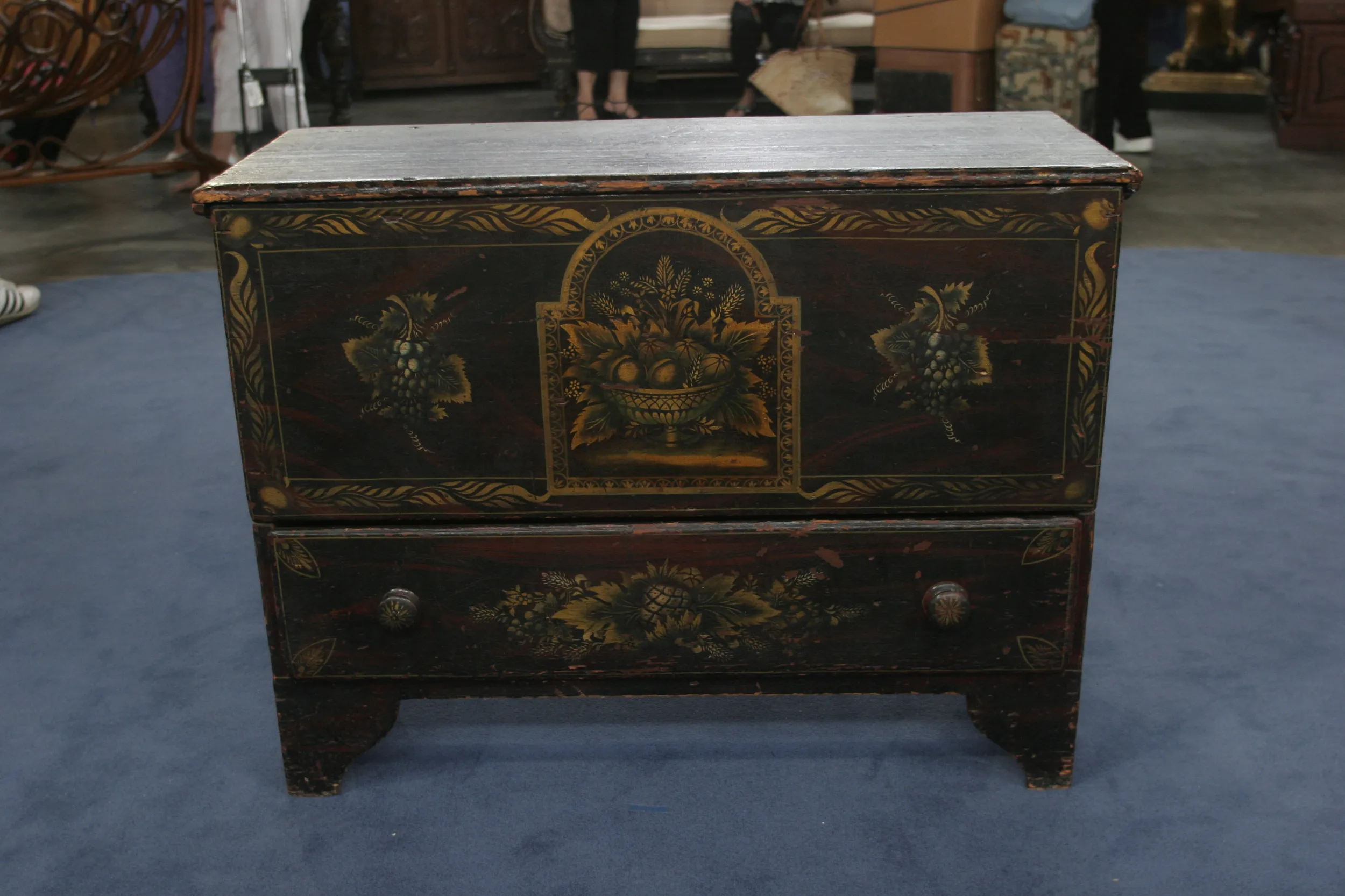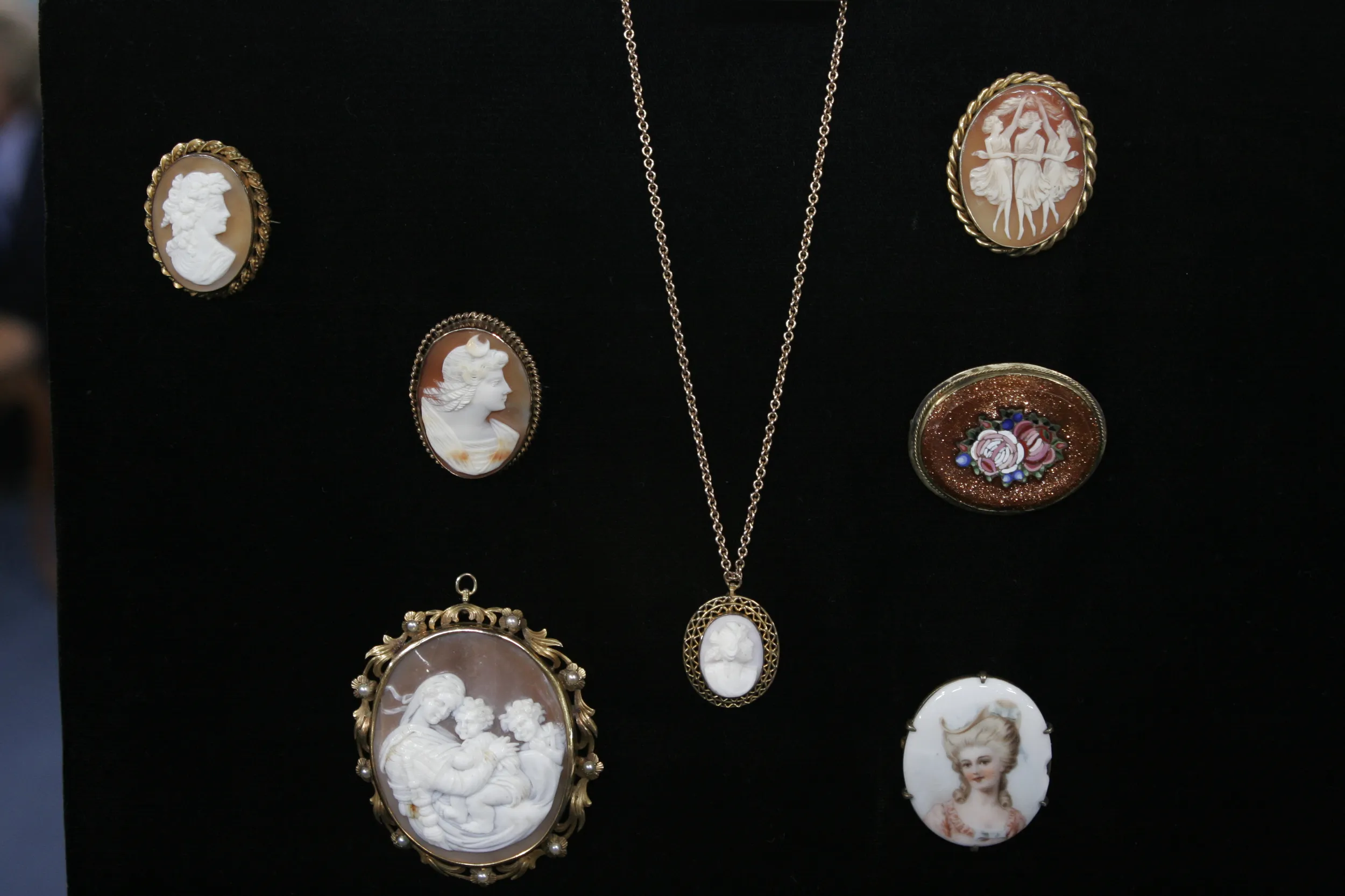GUEST: It came from my Great-Aunt May's house in Philadelphia. My immediate family has had it since 1972-ish, and it just came from a house that was just full of antiques.
APPRAISER: The first thing that strikes one about this, obviously, is the size.
GUEST: Right.
APPRAISER: It's monumental, and the tradition of making monumental porcelain vases began in China, and most recently, one finds that these were made in the early 18th century. And they were made for European nobility. Now, by the end of the 18th century, that was out of fashion. But Japan by the late 19th century had been in contact with the West, and they were interested in producing goods and products for export to the West. So they're made of porcelain, very large, going back to the tradition of these made in China, but meant to really capture the public's imagination and to show the skill and the incredible fine-quality workmanship of the Japanese artisans. It's a very large landscape design that is continuous, typical of Japanese art. But the fine quality of the painting is really extraordinary, all hand-done. This actually is in two pieces.
GUEST: Yes, it is.
APPRAISER: Right? And it's heavy. To make this on a wheel in one piece is just not possible. It would have collapsed from the weight.
GUEST: Right.
APPRAISER: Now, when it was put together, there was a small amount of glaze there, put back into the kiln, fired again, and that provided just enough of an adhesive so that when someone lifted it, it wouldn't fall off. Now, at some time in the history of this vase, someone decided to lift it. And I'm gonna be very careful when I put this back, so we don't break anything. Someone decided to lift it this way, and it popped apart. Does that damage the value? No. This is a fault line that was always there, and it could be made to be attached again. Do you need to do that? No, you don't. It's probably worth around $6,000 to $8,000.

